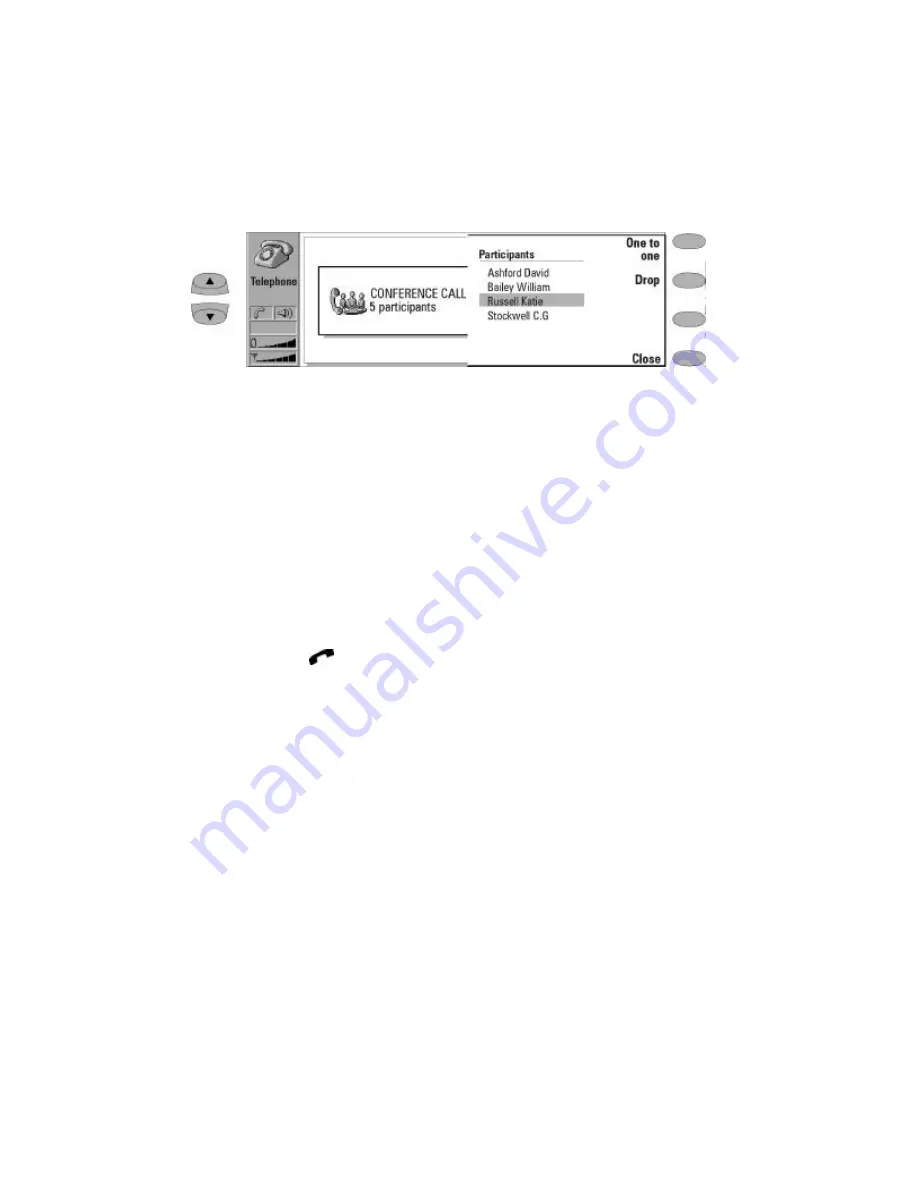
4-8
Conference call
Voice call transfer
The voice call transfer is a network service that
enables you to connect two voice calls together
and disconnect yourself from both calls.
Note:
The transfer operation can be made only if:
1. You have one call on hold.
2. You have one call active.
3. All calls are voice calls (fax or data calls
cannot be transferred).
4. None of the calls is a conference call.
There are two ways to transfer voice calls from
the phone interface:
1. Press
4
followed by .
or
2. Press and hold the
Menu
key for a second.
Choose the Transfer option in the menu and
press
OK
, or press
Quit
to cancel.
To transfer from the communicator interface:
•
When you have one call on hold and another
call active, press
Call commands
.
‚
Choose the option Transfer call and press
OK
.
Alternating calls
During an alternating call, you may change the
mode of the call from voice to fax. Alternating
calls can be made to a fax mailbox, for example:
you initiate the call as a voice call, but it changes
into a fax call when your fax mailbox starts to
send you your faxes.
To make alternating calls you need to add a spe-
cial Tel/Fax field to the contact cards of the ser-
vices of your alternating calls (see Chapter 3
"Contacts: Contact cards - Customizing contact
cards" on page 3-3).
You can also change a voice call into a fax call by
pressing
Change mode
. Alternating calls cannot
be put on hold or incorporated into a conference
call.
Sending DTMF tones
The Dual Tone Multi Frequency (DTMF) tones al-
low you to communicate with voice mailboxes,
computerized telephony systems, etc.
You can use the digits 0 - 9, as well as the
characters
p
,
w
,
*
and
#
(for information on the
functions of these characters, see Chapter 3
"Contacts: Contact cards - Storing DTMF tones"
on page 3-4).
To send a DTMF sequence when you have an
active call:
1. Press the digits at the top of the communica-
tor interface keyboard. Each keystroke will
generate a DTMF tone which will be trans-
mitted directly.
or
2. Press
Send DTMF
. A list of stored DTMF se-
quences is shown (for information on how to
store DTMF sequences, see Chapter 3 "Con-
tacts: Contact cards - Storing DTMF tones"
on page 3-4).
Figure 4-4: Conference call



































